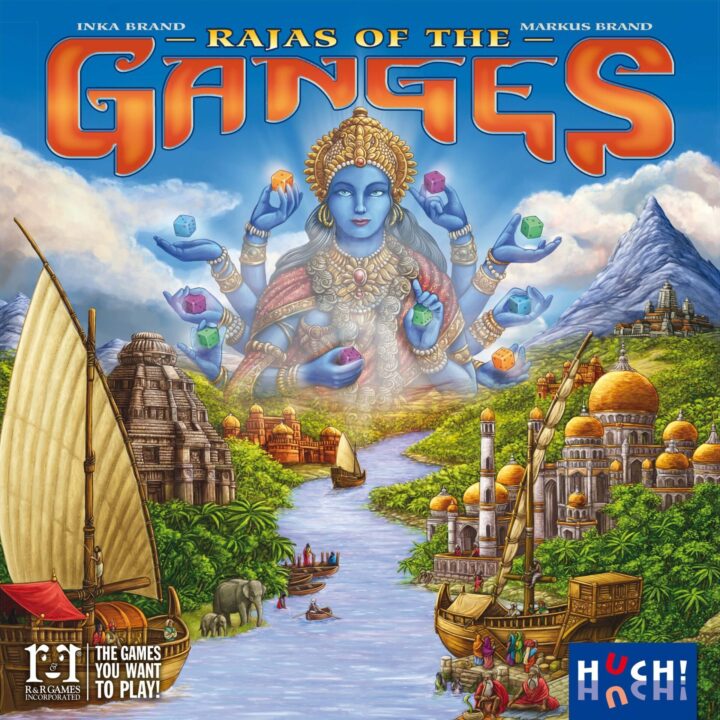Overview
Welcome to my review of Rajas of the Ganges, a captivating and strategic board game set in 16th century India. In this review, we will delve into the intricate gameplay mechanics, explore the strategic depth offered by the game, appreciate the high-quality component craftsmanship, and marvel at its impressive replayability. Prepare to embark on an immersive journey filled with tough decisions, tactical brilliance, and endless possibilities.
How It Plays
Setting Up
To set up Rajas of the Ganges, first, the modular game board is prepared according to the chosen configuration. Each player receives a player mat, dice, starting tiles, and a personal supply of coins and victory point markers. The resource tiles, bonus tiles, and cards are shuffled and placed within reach. The victory point track is placed on the side of the board, ready for use.
Gameplay
During each round, players take turns placing their worker dice on various actions on the board. These actions allow players to acquire resources, develop their provinces, manipulate the trade routes along the river, and earn victory points. The clever use of dice rolls introduces an element of chance and adaptability into the game, adding to the excitement and challenge. Possessing the right resources at the right time and employing optimal strategies form the crux of a successful gameplay experience.
Winning the Game
The game ends once a player’s money and fame markers reach the bottom of the victory point track. At this point, final scoring takes place, where players calculate their total victory points based on acquired tiles, milestones reached, and achieved wealth and fame. The player with the most victory points emerges as the winner, securing their place as the most influential noble in the land of India.
With its straightforward rules and intuitive gameplay flow, Rajas of the Ganges offers an accessible entry point for both new and experienced players. The gameplay strikes a perfect balance between tactical decision-making, resource management, and long-term strategy, ensuring an engaging and satisfying gaming experience.
Want to know more? Read our extensive strategy guide for Rajas of the Ganges.
Unraveling the thrilling and engaging gameplay mechanics of Rajas of the Ganges is a splendid rollercoaster ride for board game enthusiasts. This strategic gem delivers a unique blend of worker placement and dice rolling that keeps players on their toes at every turn.
The Wheels Within the Machine
From the moment the game begins, players are immediately drawn into the intricately designed gameplay mechanics. Each player takes on the role of a noble in 16th century India, striving to increase their wealth and influence. The core gameplay revolves around placing worker dice on various actions to gain resources, develop your province, and score victory points.
Rolling the Dice of Fate
The clever inclusion of dice rolling is what injects Rajas of the Ganges with a dash of unpredictability. Every round, players roll their worker dice, determining the actions available to them. This creates a dynamic and exciting element of chance, as players must adapt their strategies based on the results. Somehow, even when fate deals a challenging hand, the game ensures there are always avenues for clever decision-making.
Juggling Resources and Actions
Successfully managing limited resources within a carefully constructed economy is a make-or-break aspect of the gameplay. Various actions require specific combinations of resources, which requires thoughtful planning and allocation. Balancing the acquisition of wealth, influencing the river’s trade, and wisely engaging in construction projects presents players with exhilarating choices that have long-lasting consequences. This constant balancing act intensifies the strategic nature of the game.
Rivaling for Fame and Prestige
In Rajas of the Ganges, victory belongs to those who skillfully rise above their rivals. The game incorporates a dual victory track system that awards points for wealth and knowledge. This ingenious concept compels players to diversify their strategies while leaving ample room for adapting to the ever-changing game state. Competing against adversaries who share the same pursuit of fame and prestige adds palpable tension to each decision made around the board.
Upon fully immersing oneself in the captivating gameplay mechanics of Rajas of the Ganges, players are met with endless strategic possibilities. From calculating the ideal placement of worker dice to optimizing resource management, every move becomes a crucial step towards victory. Stay tuned for the next section, where the spotlight will shine on the strategic depth that embraces players in this remarkable game.
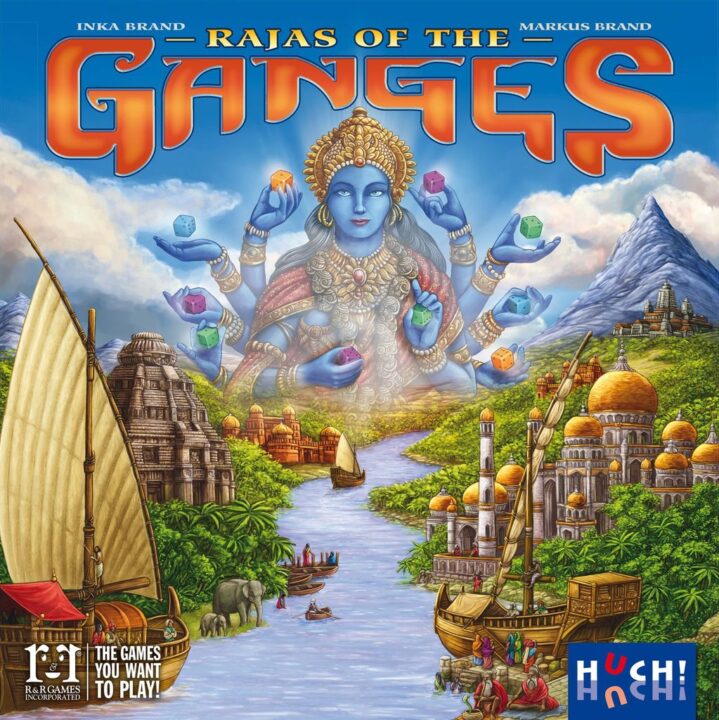
The Depths of Tactical Brilliance
Rajas of the Ganges mesmerizes players with its vast strategic depth, offering a plethora of choices that require insightful planning and diplomatic moves on the board. This game transforms into a cerebral battleground where players outmaneuver each other, carefully charting their path to victory.
Exploring an Array of Strategies
One of the game’s shining attributes is the multitude of viable strategies, allowing players to carve their own unique paths to success. Whether focusing on amassing wealth, pursuing knowledge, or ingeniously manipulating the trade routes, players can strategize according to their preferred playstyle. This freedom cultivates a sense of agency, rewarding both daring tactical moves and well-calculated decisions.
Dynamic Player Interactions
Rajas of the Ganges thrives on player interaction, offering ample opportunities for negotiation, alliances, and tactical disruptions. Through strategically placing their worker dice and utilizing the powers of unique tiles, players can truly influence each other’s fortune on the board. The dynamic nature of the game ensures a constant exchange of strategies and forces players to adapt their plans to counter the cunning moves of their opponents.
Evolving Strategies in a Changing Landscape
The game incorporates various features that keep the strategic landscape in flux. The modular board, which can be assembled in different ways, engenders a fresh experience with each playthrough. Additionally, actions such as purchasing victory point tiles and placing milestones introduce new and exciting tactical considerations, encouraging players to recalibrate their strategies to seize strategic advantages brought about by these elements.
Balancing Immediate and Long-Term Goals
One of the many captivating challenges faced by players in Rajas of the Ganges is finding the harmony between immediate goals and long-term objectives. While it may be tempting to focus solely on accumulating wealth or knowledge, neglecting to invest in infrastructure or advance on the victory track can lead to missed opportunities. Successfully balancing short-term rewards with long-term gain showcases the depth and richness of strategic thinking this game elicits.
Embarking on a journey of strategic brilliance in Rajas of the Ganges unveils a treasure trove of opportunities for those who seek to master the art of manipulation and adaptation. With an abundance of viable strategies, dynamic player interactions, ever-changing landscapes, and the constant tug-of-war between short-term gains and long-term goals, the game immerses players in a world where strategic wit reigns supreme. Coming up next, let us dive into the realm of component quality and appreciate the craftsmanship that enhances the overall gameplay experience.
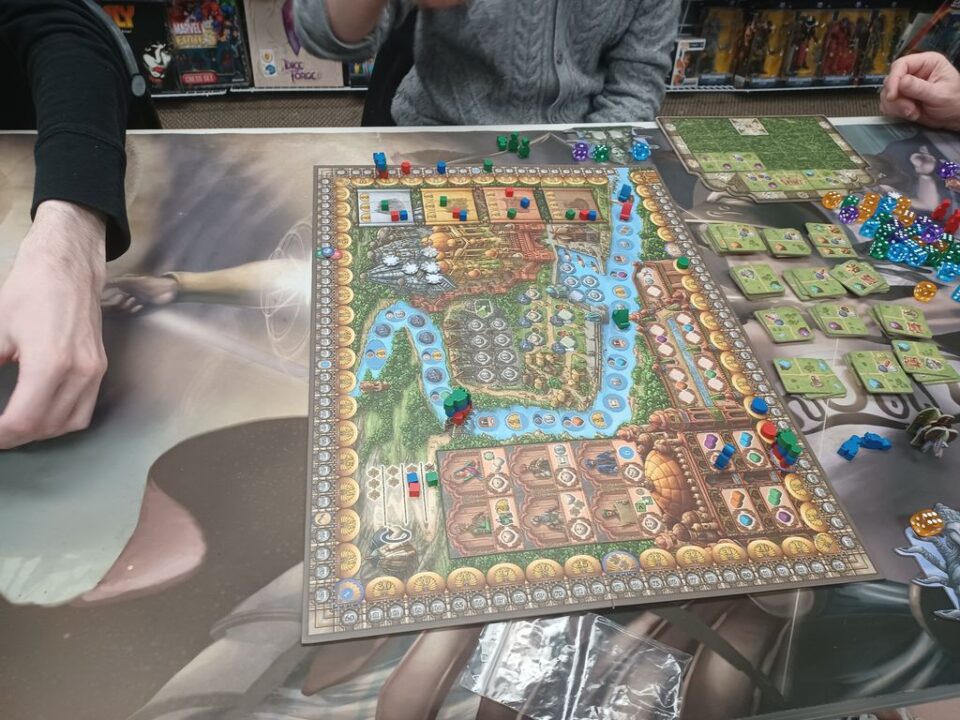
Aesthetics and Craftsmanship in Full Display
When it comes to component quality, Rajas of the Ganges stands as a beacon of excellence, epitomizing meticulous attention to detail. From the beautifully designed game board to the exquisite artwork on cards and tiles, every component shines radiantly, contributing to a visually captivating and immersive gaming experience.
Luxurious Playing Material
The high-quality materials used in Rajas of the Ganges elevate the tactile experience beyond expectation. The thick and sturdy cardboard tokens and tiles have a satisfying weight to them, exuding durability and longevity. The wooden and plastic components, from the intricately crafted river tiles to the elegant resource cubes, further amplify the richness of the gameplay. The overall result is an exquisite ensemble of components that feel indulgent to handle, enhancing the overall immersion.
Striking Artwork and Graphic Design
The game’s artwork and graphic design are simply breathtaking, transporting players into the vibrant world of 16th century India. Every card and tile is adorned with intricate details and rich colors, making it a feast for the eyes. The cohesive art style contributes to the overall theme and narrative, enlivening the gameplay and providing players with a visual treat while strategizing their next move.
Thoughtful Iconography and Intuitive Layout
Rajas of the Ganges excels in providing players with an intuitive and user-friendly visual language through its thoughtful iconography. The symbols and icons found on cards and tiles are clear and easily understandable, minimizing the need for frequent rulebook consultations. Furthermore, the layout of the game board and player mats facilitates smooth gameplay, ensuring players can focus on the strategic decisions at hand rather than getting bogged down by confusing interfaces.
Immersive and Thematic Experience
Through its high-quality components, Rajas of the Ganges immerses players in the thematic brilliance of the game. The attention to detail in the craftsmanship reinforces the narrative and transports players to the heart of 16th century India. The lavish materials, striking artwork, and intuitive design all work together harmoniously to create a truly engaging and immersive tabletop experience.
Experiencing the game with such impeccable component quality not only elevates the overall aesthetic appeal but also enhances the gameplay itself. Every detail has been carefully considered, making Rajas of the Ganges a true masterpiece of craftsmanship. As we conclude this section, let us venture forth into the realm of replayability, where we explore the game’s ability to enthrall players over multiple playthroughs.
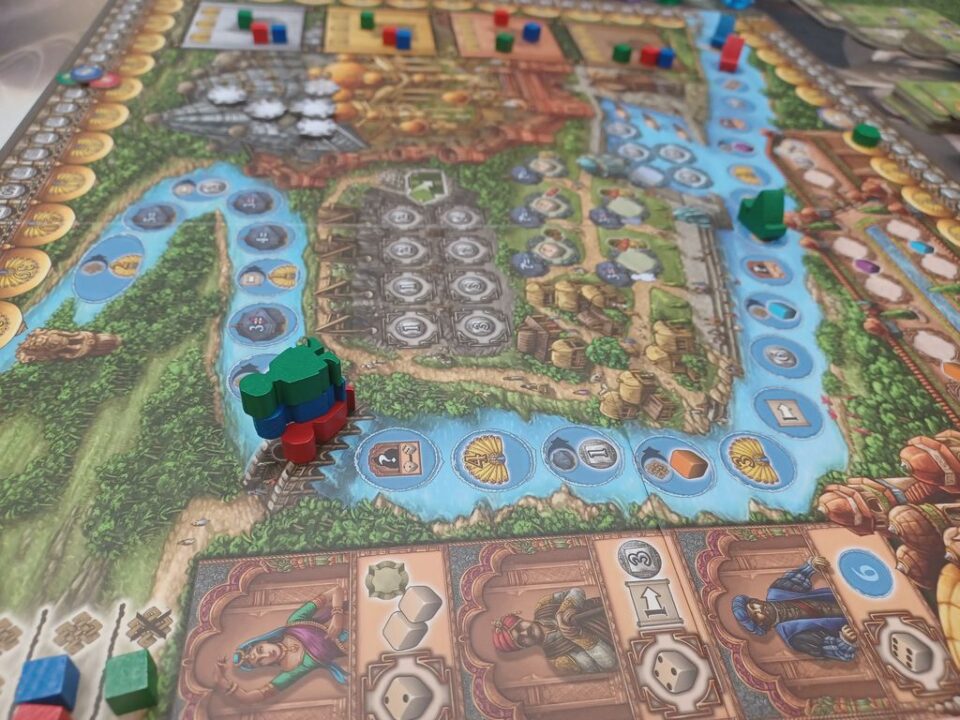
Endless Possibilities, Endless Fun
Replayability is a crucial aspect of any board game, and Rajas of the Ganges expertly incorporates this element, making each playthrough a fresh and exciting experience. With a multitude of factors at play, the game offers endless possibilities and a deep well of strategic surprises that entice players to return to the gaming table again and again.
Modular Board Configurations
One of the key contributors to the game’s replayability is the modular board system. The game provides several configurations, allowing players to customize their game board, thereby altering the layout and distribution of key components. This injects a refreshing variability into each session, spurring players to explore different strategies and adapt their gameplay accordingly. No two games will ever be quite the same, ensuring each playthrough delivers a new set of challenges and opportunities.
Varying Player Powers and Starting Locations
Rajas of the Ganges further enhances its replayability by offering different player powers and starting locations. Each player possesses a unique player power that provides them with a distinct advantage or ability throughout the game. Additionally, starting locations on the victory point track vary, influencing the initial strategy and focus of each player. These differences diversify the gameplay experience, inspiring experimentation and encouraging players to embrace strategies they may not have considered before.
Strategic Depth and Decision-Making
The intricate gameplay mechanics and multiple pathways to victory contribute to the game’s replayability. Rajas of the Ganges presents a wide array of viable strategies, allowing players to adapt their approach in every game. The dynamic nature of player interactions, the ever-changing landscape, and the effective balancing of short-term and long-term goals keeps the game engaging and challenging with each playthrough. Players will find themselves discovering new tactics, fine-tuning their strategies, and honing their decision-making skills as they delve deeper into the game.
As you immerse yourself in the realm of Rajas of the Ganges, its replayability emerges as a key strength. From the flexibility of the modular board to the unique player powers, every aspect of the game is designed to ensure a rewarding and varied experience no matter how many times it hits the table. The depth of strategic options, coupled with the game’s ability to evolve and surprise, guarantees endless hours of entertainment and engagement.
With its captivating gameplay mechanics, strategic depth, stunning component quality, and high replayability, Rajas of the Ganges earns my enthusiastic recommendation to board game enthusiasts. This gem of a game offers a multifaceted experience that will continue to enthrall, surprise, and challenge players with its innovative design elements and endless possibilities.
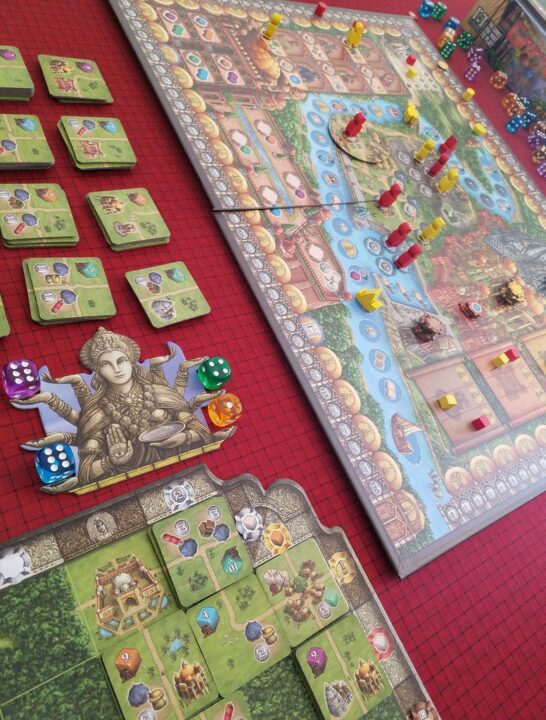
Conclusion
In conclusion, Rajas of the Ganges is a remarkable board game that successfully marries engaging gameplay mechanics, strategic depth, high component quality, and impressive replayability. The combination of worker placement and dice rolling creates a dynamic and exciting experience where players must adapt to ever-changing circumstances. The meticulous attention to detail in component design and artwork enhances the immersive journey into 16th century India. With its vast array of strategic choices, thought-provoking decision-making, and endless possibilities, Rajas of the Ganges is a standout addition to any board game collection. Whether you’re a seasoned player or new to the world of board games, Rajas of the Ganges is a must-try. And that concludes our review!

